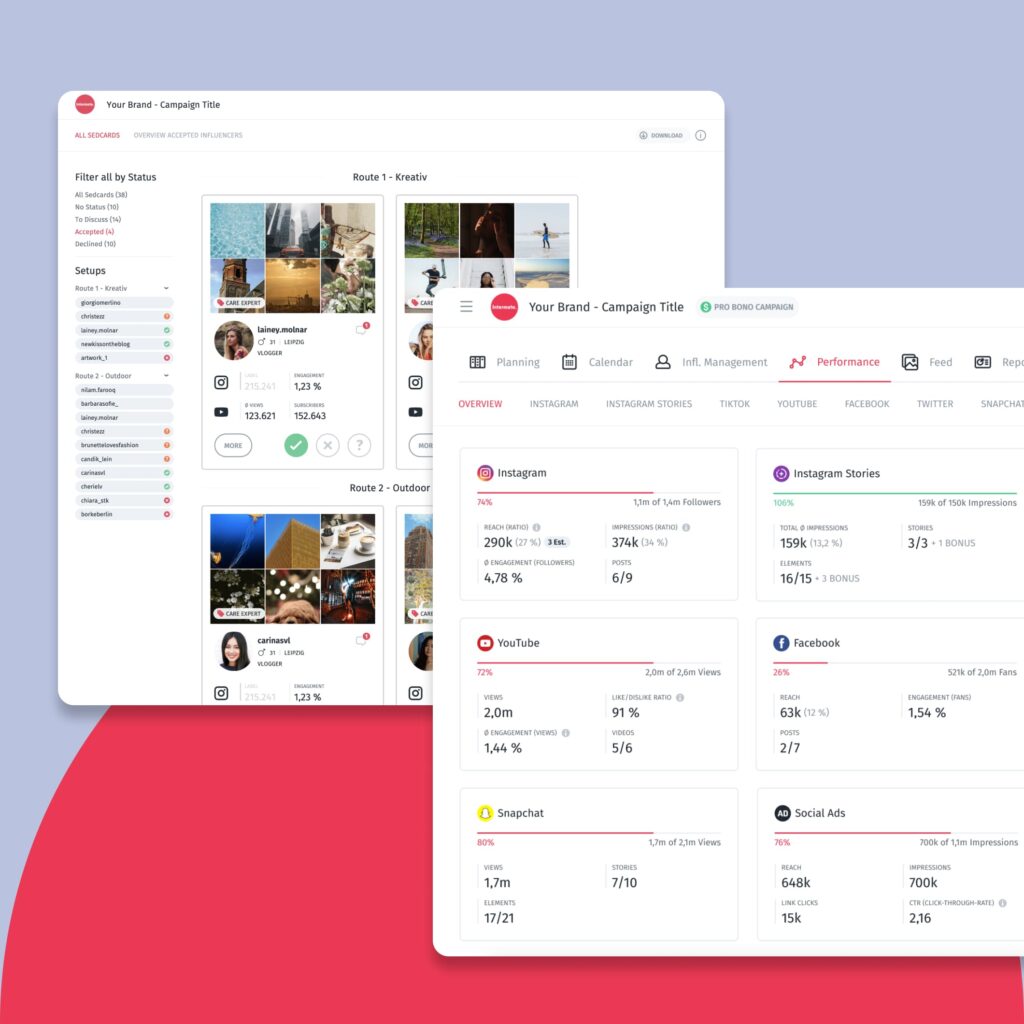Blog
How Can Virtual Assistants Instantly Prototype a Marketplace or SAAS for You?

I. Introduction
Businesses and entrepreneurs are continuously searching for innovative solutions to stay ahead of the competition, especially during challenging economic times
Software development has become a crucial aspect of this quest, as it enables companies to create products and services that cater to the ever-changing needs of consumers.
Today, we will explore the allure of software development in today’s market, the challenges faced by software founders and product managers, and an innovative approach to quickly prototype features or even entire applications using virtual assistants.
A. The allure of software development in today’s market
The software industry has experienced exponential growth in recent years, attracting businesses and entrepreneurs alike. This growth can be attributed to several factors:
- Accessibility: Widespread availability of technology and the internet, has made it easier than ever for individuals and companies to develop and distribute software.
- Scalability: Software solutions can be easily scaled to accommodate growing user bases or increasing demands, making it an attractive option for businesses looking to expand.
- Cost-effectiveness: Compared to traditional brick-and-mortar businesses, software companies generally have lower overhead costs and can reach a wider audience without significant investments in infrastructure.
- Innovation: Software development allows businesses to create new products and services, streamline processes, and adapt to changing markets quickly.
B. The challenges of software development
Despite the numerous advantages, software development also presents its own set of challenges:

1. Expensive engineers
Hiring skilled software engineers can be quite costly, especially for startups and small businesses with limited budgets.
2. Time-consuming development
Building software takes time, and the development process can be lengthy, often stretching from months to years. This can result in delays in bringing products to market or responding to changing customer needs.
3. Maintaining quality
Ensuring the quality and reliability of software products can be difficult, especially as the complexity of the software increases.
4. Staying current
The rapid pace of technological advancements requires constant learning and adaptation to stay competitive in the software industry.
Key Takeaway: While the scalability and low variable costs per additional client offer promising advantages, the initial fixed costs can be exceedingly high. Additionally, the early revenue generated from the first clients is usually too low to return quickly, making the upfront investment quite steep.
C. The importance of focusing on delivering value
Founders and product managers must prioritize delivering core value to customers. The core value represents the fundamental benefit or advantage that the software product offers to its users.
Understanding the customers’ needs and pain points, or your clients day to day jobs can help founders and product managers to identify the essential features and functionalities that address those needs directly.
Focusing on core values ensures that the development efforts align with customers’ expectations and create meaningful solutions.
Software engineers can avoid feature bloat and unnecessary complexity, delivering streamlined and intuitive solutions that simplify and enhance the users’ workflow.
It enables a more streamlined development process, allowing for faster iterations and a better allocation of resources.
Moreover, delivering core values establishes a strong foundation for customer satisfaction, loyalty, and positive word-of-mouth, which are vital for the success and growth of any software product.
Build a simple product that works and converts.
Get step-by-step guidance from product managers, UI/UX designers, and tech leads, taking you from idea to launch
II. The Human Hack: Prototyping with Virtual Assistants
A. Overlooking the potential of human-powered services
In the race to develop innovative software solutions, it’s easy to become fixated on the idea of building everything with code.
This mindset can lead founders and product managers to overlook the potential of human-powered services that can deliver functionality more quickly and cost-effectively.
Incorporating virtual assistants (VAs) into the development process, allows businesses to create prototypes or even fully functional applications without the need for extensive coding or engineering resources.
B. Identifying ‘low-hanging fruit’ for manual prototyping
When considering the use of virtual assistants for prototyping, it’s crucial to identify the features and tasks that are most suitable for human-powered services.
Using virtual assistants to handle certain tasks, helps you take advantage of a ‘low-hanging fruit’ and save significant development time and resources while still providing functionality to users who need it.
You can then prioritize more critical features for your engineering team.
III. Using Virtual Assistants for Onboarding and Data Migration
A. The Importance of effective customer onboarding
Customer onboarding is a critical aspect of any SaaS or marketplace business, as it sets the foundation for a successful customer relationship.
When an onboarding process is executed well, it can lead to increased customer satisfaction, higher retention rates, and overall business growth.
Virtual assistants can play a massive and key role in making sure the onboarding process is as smooth as possible for your new customers.
B. Setting up accounts with the help of virtual assistants
Virtual assistants can also help customers set up their accounts and tweak the software to meet their unique needs. Some of the tasks VAs can handle include:
- Taking customers through the registration process
- Helping with account configuration and personalization
- Answering questions about features and functionalities
- Guiding setting up integrations with other platforms or tools
C. Getting started with the help of virtual assistants
To help customers get started with the software, virtual assistants can offer personalized support and training:
- Offering tailored walkthroughs and tutorials
- Demonstrating how to use key features and functionalities
- Providing tips and best practices for maximizing the software’s potential
- Addressing any questions or concerns customers may have during the initial setup
D. The process of data migration with a VA
1. Accessing the customer’s current app
The VA will first need to obtain access to the customer’s existing software application or system. This can be done with the customer’s permission, either through direct login credentials or a secure method of sharing data access.
2. Exporting data in any format
The VA will collaborate with the customer to export their data from the current system in a format that can be easily imported into the new application. This may involve converting data files or extracting information from databases.
3. Efficient bulk-import options
Once the data is in a compatible format, the VA will use available tools and processes to efficiently import the data into the new system. This may involve using bulk import features, APIs, or even manual data entry, depending on the specific requirements of the software.
E. Balancing real-time functionality with manual assistance
IV. Use Cases for Virtual Assistants in SaaS and Marketplaces

A. Onboarding and Data Migration
Virtual assistants can play a vital role in improving the onboarding experience for new customers and facilitating data migration when transitioning from other systems. Here’s how VAs can support these processes:
- Personalized onboarding support: Virtual assistants can help take customers through the account setup process, provide tailored tutorials, and address any questions or concerns that may arise during the initial stages. This one-on-one support ensures customers feel highly valued and confident in using the software.
- Data migration assistance: VAs can work hand in hand with customers to access their current app or export their data in the required format. They can identify the most efficient method for importing the data into the new system and ensure that it is accurately migrated while maintaining consistency and integrity.
- Troubleshooting issues: Virtual assistants can also help customers work their way through any issues they may encounter during the onboarding or data migration process. This ensures that there is a smooth transition for customers and minimizes frustration.
- Follow-up and customer success: After the onboarding and data migration process is complete, virtual assistants can help follow up with customers to make sure that they are satisfied and address any lingering questions or concerns. This contributes to long-term customer success and fosters a strong relationship between the customer and the company.
B. Managing marketplace matches, fulfillment, and payments
Virtual assistants can be valuable in managing payment processes in online marketplaces. They can handle tasks such as:
- Verifying and processing transactions: VAs can monitor transactions, make sure they are legitimate, and process payments securely.
- Resolving payment disputes: VAs can act as intermediaries between buyers and sellers in resolving disputes and issuing refunds when necessary.
- Invoicing and bookkeeping: VAs can help maintain accurate financial records by generating invoices, tracking payments, and updating accounting systems.
C. Data interpretation and analysis
Data analysis is another area where virtual assistants can play a vital role:
- Reporting: VAs can generate reports based on certain metrics or key performance indicators, helping businesses monitor their performance.
- Data visualization: VAs can create visual representations of data, such as charts and graphs helping stakeholders to understand trends and patterns.
- Insights and recommendations: By analyzing data, VAs can pinpoint opportunities for improvement or growth and provide actionable recommendations to decision-makers.
D. Enhancing application utility with human support
Virtual assistants can also improve the overall utility of an application by providing human support in areas such as:
- Customer service: VAs can handle customer inquiries, troubleshoot issues, and provide personalized support, resulting in a more intimate user experience.
- Onboarding and training: VAs can guide new users through the process of setting up and using the software, making sure they get the most out of the application.
- Content creation and management: VAs can assist with creating and managing content for blogs, social media, or other platforms, helping to promote the software and engage users.
V. Examples of successful applications leveraging VAs
Several successful applications and platforms have effectively incorporated virtual assistants into their operations:
- Zapier: The company uses virtual assistants to provide expert guidance and assistance for users, helping them create custom integrations and automation that are tailored to their specific needs.
- Shopify: Shopify uses virtual assistants to help store owners manage their day-to-day operations, such as managing inventory, handling customer inquiries, and providing marketing support.
- Wix: Wix is a website builder and hosting platform. Virtual assistants at Wix help users design and build their websites, providing expert advice and support throughout the process.
- Teachable: Teachable is an online platform that allows users to create and sell online courses. The company employs virtual assistants to help instructors manage their courses, provide technical support, and handle customer inquiries, thus enhancing the user experience and contributing to the success of the Teachable platform.
- CenterPoint Solutions: CenterPoint is a SaaS company that provides workflow management solutions in the construction and commercial loan monitoring industry. Centerpoint software solution optimizes workflows and promotes collaboration amongst developers, lenders, general contractors, appraisers, architects, and engineers by providing a real-time hub where they can share files and notes. They’ve been able to use VAs to help organize workflows, manage the work in progress, and create synergy between the engineers and the construction projects at hand while working on more complex solutions to improve automation
- Sentryc: Sentryc is a German-based company that offers software solutions that help companies and brands detect and contain product piracy and brand abuse. Sentryc offers you a central tool with which you can monitor the use of your trademark online and remove unauthorized use quickly and effectively. Their AI algorithm searches the web for brands and products and monitors online marketplaces or social platforms. They’ve been able to use VAs to handle lead generation as well as manage takedown requests from their clients helping them prevent counterfeiting effectively and efficiently on online marketplaces and social media platforms.
These examples demonstrate the versatility of virtual assistants and their potential to improve the functionality and success of software applications and marketplaces.
VI. Finding and Implementing Virtual Assistants
A. Where to find qualified virtual assistants
There are several platforms and resources to find qualified virtual assistants:
- Freelance platforms: Websites like Upwork, Freelancer, and Fiverr offer a vast pool of virtual assistants with a wide range of skills and expertise.
- Virtual assistant agencies: Agencies such as Belay, Time Etc, and TimeDoctor specialize in providing pre-vetted, skilled virtual assistants tailored to your needs.
- Online communities and forums: Networking in industry-specific communities or general entrepreneur forums can offer valuable connections with experienced virtual assistants.
- Personal referrals: Ask for recommendations from colleagues or other entrepreneurs in your network who have successfully utilized virtual assistants.
- Trustshoring: We help source the right remote resources for your business, taking care of contracting and international payments allowing you to focus on your business. We do this via our hiring arm Superbhire
B. Establishing and refining processes for manual tasks
Before integrating virtual assistants into your operations, it’s crucial to develop clear and efficient processes for manual tasks:
- Document procedures: Create step-by-step guides and checklists for each task, ensuring consistency and quality.
- Set expectations: Clearly outline your expectations regarding deadlines, communication, and quality standards.
- Train and onboard: Provide in-depth training and onboarding to ensure virtual assistants understand your software, processes, and company values.
- Monitor progress and provide feedback: Regularly review the work of virtual assistants, offering constructive feedback to help them improve over time.
At Trustshoring we help you define all the necessary procedures and standard operating procedures making for an easy and successful engagement with your virtual assistant
C. Having virtual assistants in sync with product leadership
Virtual assistants, especially those in customer-facing roles, can provide valuable insights and feedback that can contribute to refining product roadmaps and improving the overall user experience.
To facilitate effective knowledge sharing between VAs and product leadership, consider the following steps:
- Set up communication channels: Establish dedicated channels on platforms like Slack or Microsoft Teams to foster regular interaction between VAs and the product team. This enables the easy exchange of ideas, suggestions, and feedback, fostering a collaborative environment.
- Schedule regular feedback sessions: Organize routine meetings between virtual assistants and product leadership to discuss customer feedback, pain points, and any observed trends. These sessions can help identify areas that can be improved and potential new features based on real customer experiences.
- Assign liaisons or points of contact: If you can, try and designate specific team members within the product leadership to act as liaisons or points of contact for VAs. This will help VAs have a clear channel for communicating their insights and product leadership can efficiently address any questions or concerns.
- Create a feedback loop: Develop a clear process for VAs to communicate customer feedback and insights. This may include using shared documents or ticketing systems to log feedback, enabling the product team to prioritize and address issues effectively. Regularly review this feedback to ensure that it is being incorporated into product decisions and roadmaps.
By fostering strong communication and collaboration between virtual assistants and product leadership, businesses can leverage the unique insights of customer-facing VAs to improve product roadmaps and deliver a better user experience.
D. Balancing your VA involvement as your business grows
As your business grows and evolves, you may need to scale your virtual assistant support to meet additional opportunities and rely on remote resources for example.
This may include tasks like sales and lead generation, marketing, personal assistants to improve uptime, and ongoing support and customer success.
It’s also important to note that in some cases, VA usage might actually go down once the required features are implemented and automated
- Assess your needs: Make sure you evaluate your requirements as often as possible and identify areas where additional VA support could be beneficial.
- Optimize processes: Keep refining your processes to ensure efficiency and effectiveness as your team grows.
- Monitor performance and adjust: Monitor the performance of your virtual assistants, making adjustments as needed to maintain quality and productivity.
VII. Transforming VA-Managed Processes into Scalable Software Solutions
As your business starts to scale, certain processes managed by virtual assistants may need to be scaled up from well-defined processes into software solutions.
Here’s a step-by-step outline for transforming VA-managed processes into scalable software:
- Identify the processes: Evaluate the tasks and processes managed by VAs to determine which ones have become well-defined, repetitive, and are now ready to be automated or scaled up.
- Analyze the process flow: Break down each selected process into smaller steps and map out the flow to gain a thorough understanding of how it functions and identify any areas for improvement or optimization.
- Consult with stakeholders: Collaborate with virtual assistants, product leadership, and other stakeholders to gather insights, feedback, and suggestions for potential software solutions that can effectively replace or augment the VA-managed process.
- Develop the software requirements: Based on the process analysis and stakeholder input, create a detailed list of software requirements and functionalities that will enable the seamless transition from a manual, VA-driven process to an automated software solution.
- Prototype and iterate: Develop a prototype of the software solution and test it with a small group of users or in a controlled environment. Gather feedback, identify issues, and iterate on the solution until it adequately addresses the needs of the process.
- Implement the software: Once the software solution is refined, implement it within the organization, gradually phasing out the manual process as the software takes over.
- Train and support: Provide both training and support to VAs and the end users as they learn how to use the new software solution. Ensure that any issues or concerns are addressed promptly to ensure a smooth transition.
- Monitor and optimize: Continuously monitor how the software solution is performing, gathering feedback and data to identify areas for further improvement and optimization.
Investing in software development to scale up well-defined processes can be a significant expense.
However, once a process is ready for scaling, the investment in software can yield substantial benefits in terms of increased efficiency, cost savings, and improved customer satisfaction.
VIII. Conclusion
A. The value of human-powered prototyping for SaaS and marketplaces
Human-powered prototyping, using virtual assistants can be a complement or viable alternative to traditional software development processes for SaaS and marketplace businesses.
Taking advantage of human talent to handle complex or rarely used features, allows businesses to prioritize their resources on core product functionality, improving their overall product offering and customer experience.
B. The potential for cost and time savings with virtual assistants
Incorporating virtual assistants in the development process can lead to significant cost and time savings.
Delegating specific tasks to VAs can help businesses avoid the need for expensive engineering resources and reduce the time required to develop and launch new features or applications. This efficient approach enables businesses to be more agile and competitive in the market.
C. Turning to virtual assistant services for support and collaboration
Virtual assistants can offer valuable support and collaboration across various aspects of a business, from customer service and data analysis to marketing and content management.
Integrating VAs into the team can help enhance your software’s utility and user experience, leading to increased customer satisfaction and retention.
D. Bringing your ideas to life with the help of virtual assistants
In conclusion, the creative use of virtual assistants can help bring your ideas to life more quickly and cost-effectively.
Businesses can prototype, develop, and improve their software applications and marketplaces with greater efficiency and success.
Embracing this innovative approach can help businesses thrive in today’s competitive software landscape.
Ready to turn your ideas into reality? Book a call with us today.
Not only will you receive an in-depth consultation tailored to your unique business needs, but you’ll also gain insightful product advisory to guide your MVP development!
Read more


Case study:
Intermate influencer agency
How Intermate influencer agency outperformed its competition by building an inhouse c...

Is It Safe to Outsource a Software Project to Ukraine?

How Much Does It Cost to Build Software or an App?

Streamlining Operations With Mobile Device Management (MDM) Solutions

Top 5 Advantages of Outsourcing Your Custom Software Development in 2023
Create a free plan for growth
Speak to Victor and walk out with a free assessment of your current development setup, and a roadmap to build an efficient, scalable development team and product.
“Victor has been great. Very responsive and understanding and really knows his stuff. He can go the extra mile by tapping into his prior experiences to help your company out. Really enjoyed working with him.”
Founder of Agency360

Victor Purolnik
Trustshoring Founder
Author, speaker, and podcast host with 10 years of experience building and managing remote product teams. Graduated in computer science and engineering management. Has helped over 300 startups and scaleups launch, raise, scale, and exit.